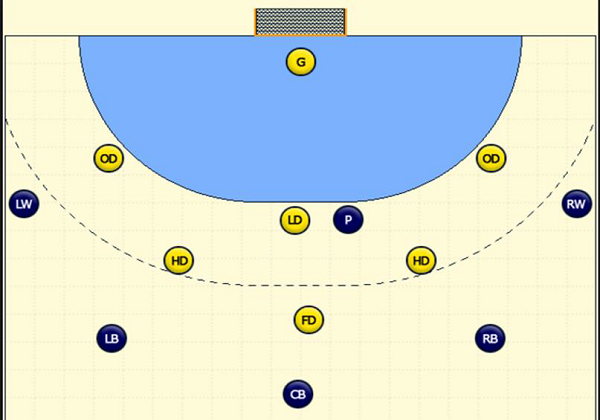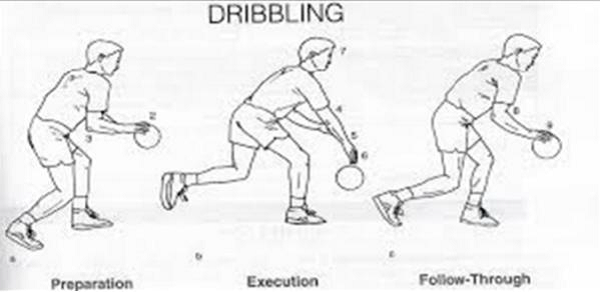Handball – How to play?
In a handball game the main objective is to put the ball inside goal post to score goal. The team which scores highest number of goals within the given time period is considered to be the winning team. A handball player must be capable to make quick movement of his body to score goals successfully. It also requires high level of stamina.
In a handball game, each team is appointed their position at one half of the court. The players are placed according to their planning to defend, to attack, and to save or score goals. Formation of a team may be of offensive or defensive.
Offensive Formation
An offensive team formation basically has left and right wingman, who are typically fast players and has excellent jumping ability required to get better shooting angle.
-
Left and Right back court − These players should be tall enough so that they are able to shoot over the defender. Goal defended by these player are basically made by jumping.
-
Centre Back Out − The player who plays in this position are also known as the playmaker. They make chances of scoring goals by maintaining appropriate passing of ball between the players. The player playing at this position is the most experienced in handball than other teammates.
Defensive Formation
Defending formation is done depending upon the planning and experience of the players. They are usually described as a: b formation where ‘a’ is the number of players defending at the goal line and ‘b’ is number of players defending offensively. Different defending formations are −
- Half left and right
- Far left and right
- Back centre and front centre

Quick Glimpses of the Game
Before we get into the rules of the game, there is a quick summary of the initial part of the game that demonstrates how the ball gets passed between the players and is defended by the opposing team. It also demonstrates various modes of scoring goal as the aim of each team is to score more goals in order to make them the winner of the match.
-
First of all, the referees decide which team will start the throw by the process of toss. The toss winning captain decides whether they will throw on or pass it to the opponent team.
-
The players pass the ball among themselves by moving towards the defending goal post. If ball from attacking player goes into the defending player’s hand, then they start attacking by passing the ball among themselves.
-
If the attacking team scores a goal, then the play is again resumed by throw on from the centre of the court through the defending player. In this way, game is continued until the allotted time for the game is exhausted.
-
In case of violation of game rules by any player of any team, appropriate punishment is given by the referee, which may be in form of penalty shooting.
Playing the Ball
Handball involves passing of ball from one player hand to another progressively with the objective of scoring goals. Hence, there are certain rules of passing the ball among the players. A player cannot take more than three steps while running towards the goal holding the ball, whereas landing after catching the ball will not be counted as a step. Players are not allowed to stray holding the ball for more than three seconds.
In case it is perceived by the referee that a player is not shooting or passing the ball, then he will lose the ball, which results in the ball going to the opposing player’s hand.

A player can dribble the ball but only once, after which he has to either shoot or pass the ball. The sequence of playing the ball may be catching the ball → 3 step → dribbling → catching → 3 step → pass/shoot within 3 minutes.
While free throw is awarded, there must be minimum 3mts distance between a defending player and an attacking player for which the free throw line is always marked at 9mts from goal so that there will be a gap of 3mts between the player attempting to shoot at the goal and defending goal-keeper.
If the goalkeeper directs the ball over the back line while saving the goal, it will remain with the goalkeeper. However if it is directed by a defending court player, the ball will go to the attackers’ hand. In case the attackers miss to put the shot into the goal and the ball goes over back line, then they lose the ball.
When the ball is thrown by attackers outside the side line, it will go to the defending players’ hand and vice-versa.
Scoring Goals
The ball shot into the goal can only be considered as a goal, if it completely passes over the back goal line. The play is restarted at the centreline by throw on by the non-scoring team.
-
A player can only shoot at the goal post from outside the goal area.
-
Only the goalkeeper is allowed inside the goal area which is a 6mts diameter semi-circular area.
-
A player can shoot a goal before the goal area when he is in air and must shoot before landing.
-
The goalkeeper is allowed to touch the ball with his/her feet, but only during saving the goal, not to direct it out of the goal area or control the ball unnecessarily.
-
An attacker or defender is not allowed to cross the goal area while playing in order to get some advantage by short cut movement of his own.
-
The goalkeeper cannot leave goal area with ball in his/her hand as a field player. But he/she can go outside the goal area for saving the ball.
-
The goalkeeper gets punishment, a free throw to the opposition team, if he/she comes out of the goal area with the ball on his/her hand. Whereas, by going into the goal area with the ball, the opposition gets a penalty from 7mts from the goal post.
-
Penalty is awarded if a player passes the ball to his own keeper when they are inside the goal area.
